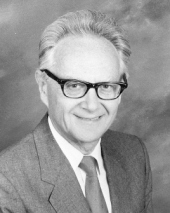UCSF Mourns Loss of Renowned Lipoprotein Researcher Richard Havel (1925-2016)
The UC San Francisco community is deeply saddened to learn about the passing of Richard Havel, MD, a world-renowned researcher in the field of lipoproteins and the former director of the UCSF Cardiovascular Research Institute (CVRI).

Havel received a bachelor’s degree from Reed College in 1946 and MS and MD degrees from the University of Oregon in 1949. He worked at the National Heart Institute from 1953 to 1956, where he initiated his research on lipoproteins and lipid transport.
“Havel’s work was truly seminal, and his endless enthusiasm for science and medicine made him a terrific role model,” said Shaun Coughlin, MD, PhD, current CVRI director.
While at the National Heart Institute, Havel developed a preparative ultracentrifugal technique for the isolation of plasma lipoprotein species that was the foundation for a generation of discovery of the biology of lipid transport and of its relationship to atherosclerotic vascular disease. The publication describing this technique is among the most often cited in all of medical bibliography. It led to the definition of many lipid phenotypes still identified today.
Havel joined the medical faculty at UCSF in 1956 as one of the founding members of the CVRI. He served as its director from 1973 until his retirement in 1992. He continued to make major contributions to understanding plasma lipoprotein metabolism and its regulation and importance in human disease throughout his long career. He was the first to establish the mechanism of a heritable lipoprotein disorder – lipoprotein lipase deficiency, and subsequently demonstrated that the metabolism of chylomicrons proceeds in two discrete steps. Later, he showed that very low-density lipoprotein metabolism involves similar steps, elucidated its regulation by free fatty acid flux, and provided an explanation for low-density lipoprotein formation.
Havel also served as the director of the Specialized Center for Research in Atherosclerosis (SCOR center) that produced a large body of integrated research on the biology and clinical significance of lipoprotein disorders. This included one of the first demonstrations that reducing the levels of atherogenic lipoproteins would decrease the plaques in diseased arteries.
Havel was also an important leader who contributed to establishing UCSF’s collaborative culture in its early days. After succeeding Julius Comroe as director of CVRI, Havel “continued this great heritage of partnership with other campus entities,” said Lloyd H. (Holly) Smith Jr., MD, a longtime colleague of Havel. “Havel quickly established his reputation as one of the pioneers in the general field of lipid metabolism and atherogenesis. He was the logical successor of Comroe as the next director and continued and expanded [CVRI’s] local and national reach. He will be missed as a colleague and as the close friend of many.”